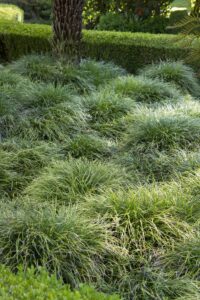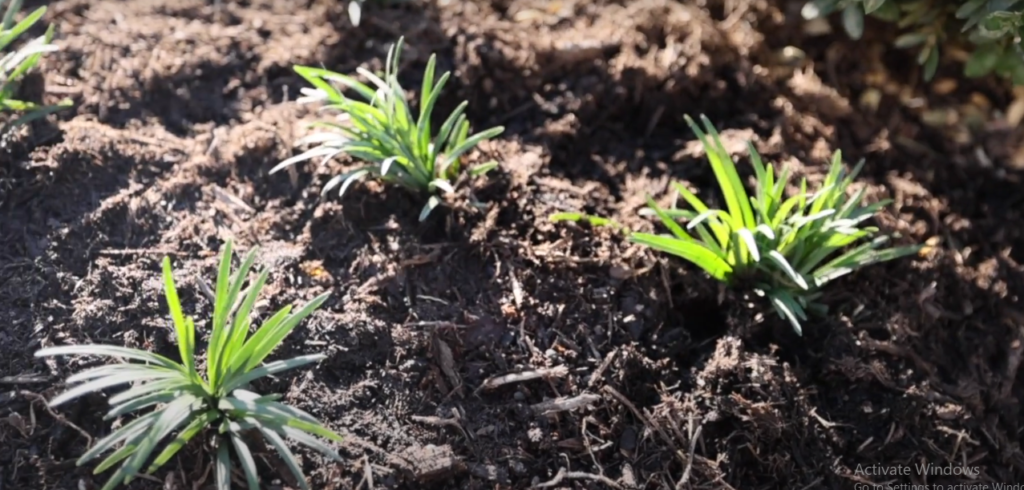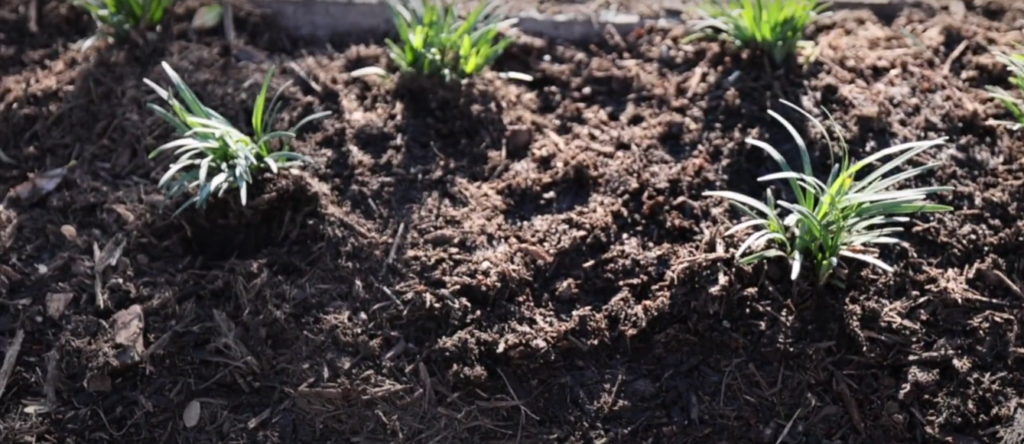Dwarf Mondo Grass: Ultimate Low-Maintenance Ground Cover
Dwarf mondo grass (Ophiopogon japonicus ‘Nana’) is a versatile, low-maintenance plant that serves as an excellent ground cover, especially in areas with partial to full shade. While it’s often referred to as a “grass,” it’s actually a member of the Liliaceae family and is more closely related to creeping lilyturf. Despite this, it shares many functions with grass and is an increasingly popular choice in southeastern U.S. landscapes for its evergreen appeal and ability to withstand light foot traffic.

What is Dwarf Mondo Grass?
Dwarf mondo grass is a cultivar of mondo grass that grows much shorter and denser, making it an ideal ground cover. Reaching a mature size of only 4 to 6 inches tall and 8 inches wide, it’s perfect for filling in shady spots or creating a soft, carpet-like effect. Despite its diminutive size, it can still tolerate light foot traffic and requires very little maintenance, making it a favorite among low-maintenance gardeners.
Grass Overview
- Common Name: Dwarf Mondo Grass
- Botanical Name: Ophiopogon japonicus ‘Nana’
- Family: Asparagaceae
- Plant Type: Perennial
- Mature Size: 4 to 6 inches tall, 8 inches wide
- Sun Exposure: Full to partial shade
- Soil Type: Rich, well-drained
- Soil pH: Slightly acidic
- Bloom Time: Summer
- Flower Color: White or light lilac
- Hardiness Zones: 6 to 10 (USDA)
- Native Area: Japan and Korea
Why Choose Dwarf Mondo Grass?
- Low Maintenance: One of the primary benefits of dwarf mondo grass is its minimal care requirements. It only needs to be mowed once a year, making it an excellent alternative to traditional grass, especially in shaded or hard-to-reach areas.
- Durability: While it doesn’t provide as even of a surface as turfgrass, it can handle light foot traffic and is a good choice for pathways or garden borders.
- Aesthetics: Its dark green foliage provides a lush, evergreen backdrop to your garden, making it ideal for year-round beauty in shady areas where other plants might struggle.
Dwarf Mondo Grass Care:
1. Light Needs
Dwarf mondo grass prefers shady conditions but can tolerate some exposure to direct sunlight, especially in cooler regions. It thrives best in full to partial shade and is perfect for planting under trees or in areas that are otherwise difficult to grow traditional grass.
2. Soil Requirements
Dwarf mondo grass thrives in rich, well-drained, slightly acidic soil. It’s important to provide a mix that retains some moisture but doesn’t stay soggy, as this could lead to root rot.
3. Watering
Consistent moisture is key to maintaining healthy dwarf mondo grass. While it’s not overly thirsty, it does prefer consistently moist soil that doesn’t dry out completely. Overwatering or soggy conditions can lead to root rot, so it’s essential to maintain proper drainage.
4. Temperature & Humidity
This plant does well in humid climates, especially in zones 6 to 10, and is evergreen in these areas. It holds up well to humidity but may struggle in extremely cold temperatures. Dwarf mondo grass is best suited for warm climates, making it a staple in southeastern U.S. gardens.
5. Fertilizer Needs
Dwarf mondo grass doesn’t require heavy fertilization. It performs best with periodic applications of compost, which can improve soil quality and support its slow growth. It doesn’t need commercial fertilizers unless soil quality is poor.


Propagation Tips for Dwarf Mondo Grass
Dividing Roots
This grass is typically propagated by dividing clumps. This is best done in spring:
- Dig Up the Plant: Use a garden fork to gently lift the clump from the soil.
- Separate the Clumps: Divide the roots by hand or with a sharp knife, ensuring each new section has some foliage attached.
- Replant: Space the divisions about 4 inches apart, and water well to help establish the roots.
Growing from Seed
Although it’s possible to grow dwarf mondo grass from seed, this method is less reliable than division. Seed germination can be slow, and the resulting plants may not be true to type. However, if you choose to propagate from seed, here’s how:
- Harvest the Seeds: Pick mature berries from the plant in the fall when they’ve turned fully ripe.
- Soak the Seeds: Place seeds in water for 48 hours, changing the water halfway through.
- Sow the Seeds: Plant the seeds in a seed tray with a well-draining medium, covering them with a thin layer of soil. Keep the tray in a sunny location and mist the soil regularly.
- Transplant: Once the seedlings are strong enough and the threat of frost has passed, transplant them outside.
You Can Also read, kikuyu grass full guide
Common Problems and Pests
1. Slugs and Snails
Slugs and snails are common pests of dwarf mondo grass. Look for chewed-up leaves or slime trails, particularly after rainstorms. Hand-pick any visible pests, or use natural deterrents like diatomaceous earth to prevent further damage.
2. Root Rot
Root rot can be a problem if the soil remains too wet for too long. Symptoms include yellowing leaves and a mushy root system. To prevent this, ensure proper drainage and avoid overwatering. If root rot occurs, remove the plant, trim away the affected roots, and replant in a well-draining location.
Types of Mondo Grass Varieties
In addition to dwarf mondo grass, there are several other varieties that may suit different landscape needs:
Black Mondo Grass (Ophiopogon planiscapus ‘Nigrescens’): A striking variety with dark black leaves, it grows 9 to 12 inches tall and prefers more sun.
Super Dwarf Mondo Grass (Ophiopogon japonicus ‘Gyoku-ryu’): A tiny cultivar, growing only 1 to 2 inches tall, perfect for areas where you need an even smaller ground cover.
FAQ: Quick Dwarf Mondo Grass Tips
How Tall Does Dwarf Mondo Grass Grow?
Dwarf mondo grass grows to a mature height of 4 to 6 inches, making it ideal for low-growing ground cover.
Are There Any Downsides to Mondo Grass?
While it’s a hardy, low-maintenance plant, dwarf mondo grass does require consistent moisture and well-draining soil. It’s not drought-tolerant, so it’s important to ensure regular watering, particularly in dry spells.
What’s the Difference Between Mondo Grass and Dwarf Mondo Grass?
The main difference is size: dwarf mondo grass is much shorter (4 to 6 inches tall) and has denser foliage compared to the standard mondo grass. It’s also slower to spread and requires a bit more patience when planting.
Conclusion
Dwarf mondo grass is an excellent choice for gardeners looking for a versatile, low-maintenance ground cover that thrives in shaded areas. Its slow-growing nature, low height, and evergreen appeal make it a standout choice for borders, rock gardens, and under trees. Whether you’re looking to create a lush carpet underfoot or a simple edging around your garden, dwarf mondo grass is a solid, durable option that will add beauty to your landscape for years to come.


